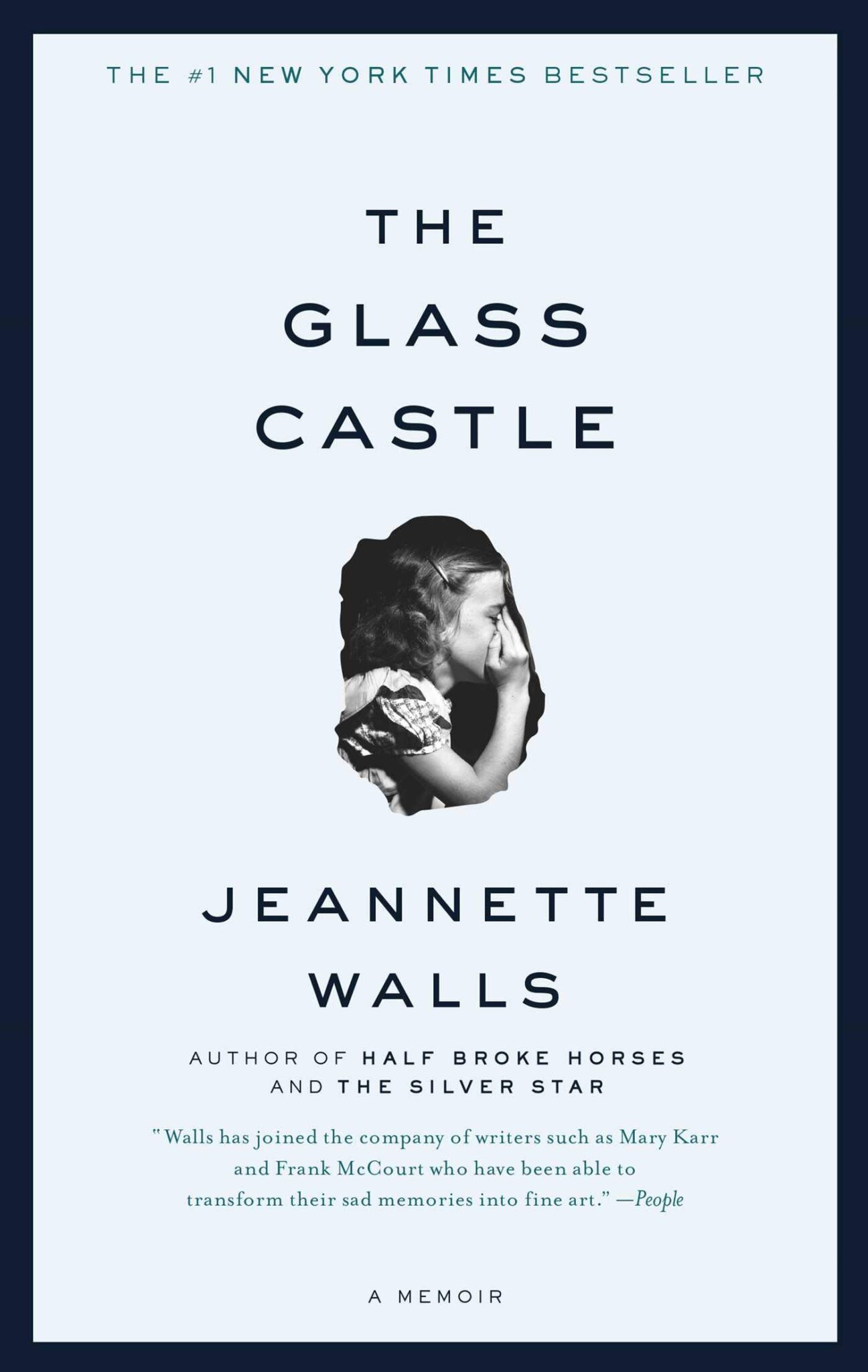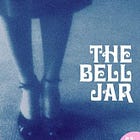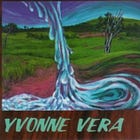Art + Psychology in The Glass Castle by Jeanette Walls
Where creativity and mental health meet in the family members of this memoir and an interview excerpt
Memoirs by women about their inner and outer lives are among my favorite books to read. When I first read The Glass Castle by Jeanette Walls, it was simply through this lens, this feeling I had that I could relate to some of what she shared about her own story, this feeling that someday I want to write my story like this. On a more recent read through the book, I was looking more closely at the relationship between creativity and mental health within the story, since I’m always trying to explore “where art meets psychology.”
The Glass Castle …
If you're not familiar with this story, it is a memoir that recounts the journalist-author’s tumultuous childhood in what is arguably a deeply dysfunctional family. Set in the 1960s and 1970s, the book details how her parents' unconventional and often neglectful, destructive behaviors shaped her childhood. Despite the hardships, Walls highlights moments of creativity and beauty that provided escape and hope for her and her siblings. The memoir portrays how art and imagination served as coping mechanisms and sources of resilience. Through her story, Walls offers a deeper understanding of how creativity can both reflect and help overcome emotional struggles.
Creativity and Psychology in the Walls Family
Rex Walls (Father): Rex Walls is portrayed as a highly intelligent and creative individual, but his mental health struggles significantly impact his life and his family's stability. He battles with alcoholism, which exacerbates his erratic behavior and emotional instability. Rex likely suffers from undiagnosed bipolar depression, characterized by extreme mood swings that range from moments of charismatic enthusiasm to deep despair. His self-destructive tendencies often manifest in impulsive decisions that undermine the family's well-being. Despite these challenges, Rex channels his creativity through storytelling, particularly in the form of his grand dream to build a "glass castle" for his family. This fantastical vision serves as a metaphorical escape from the harsh realities of their lives and becomes a central symbol of hope for his children. Rex also engages his children in intellectual discussions, fostering their critical thinking and imaginative capacities.
Rose Mary Walls (Mother): Rose Mary Walls is depicted as a free-spirited and unconventional woman, deeply committed to her artistic pursuits, often at the expense of her responsibilities as a mother. Her mental health is marked by signs of depression and emotional detachment, which manifest in her frequent "moods" and her tendency to prioritize her own desires over the needs of her children. Rose Mary's behavior suggests a possible underlying mental health condition, and she also exhibits hoarding tendencies, particularly with her art supplies. Her creative outlet is painting, which she uses as a form of self-expression and escapism. Despite the family's nomadic and financially unstable lifestyle, Rose Mary finds solace in her art, creating works that reflect her unique perspective on life. Her commitment to her bohemian lifestyle and rejection of societal norms further underscore her complex relationship with both her mental health and her role as a mother.
Jeannette Walls (Narrator and Central Character): Jeannette Walls, the narrator and central figure of The Glass Castle, provides a deeply personal account of her tumultuous upbringing and the emotional scars it left behind. Despite the neglect and instability she experienced, Jeannette exhibits remarkable resilience and determination, qualities that help her break free from the cycle of dysfunction that defined her childhood. Her mental health journey is closely tied to her pursuit of stability and success, which she sees as a way to overcome and cope with the trauma of her past. Writing serves as Jeannette's primary creative outlet, offering her a therapeutic means to process her emotions and make sense of her experiences. Through her journal entries and later her career as a journalist and author, Jeannette uses storytelling as a way to gain clarity, reflect on her life, and ultimately, heal from the wounds of her upbringing.
Lori Walls (Eldest Sibling): Lori Walls, the eldest sibling in the Walls family, is portrayed as a resourceful and intellectually sharp individual who assumes a significant emotional burden within the family. Although her mental health struggles are not explicitly detailed in the memoir, her role as the responsible and supportive older sister suggests that she may have internalized much of the family's stress and dysfunction. Lori's determination to create a better life for herself and her siblings drives her to excel academically and seek out opportunities for personal growth. Her creative outlet is writing, and she is also an avid reader. Through her engagement with literature and her own creative writing, Lori maintains a sense of hope and optimism, even in the face of overwhelming challenges.
Brian Walls (Second Oldest Sibling): Brian Walls, the second oldest of the Walls siblings, is depicted as a practical and observant individual who often takes on the role of protector within the family. His mental health is less explored in the memoir, but his protective nature and his struggles with adapting to life outside the family's chaotic environment hint at underlying emotional challenges. Despite these difficulties, Brian demonstrates resilience and resourcefulness. His creative outlet is his artistic talent, which he uses to find joy and beauty in the world around him. Brian's ability to create art and his practical intelligence help him navigate the complex and often harsh realities of his upbringing.
Maureen Walls (Youngest Sibling): Maureen Walls, the youngest sibling, faces significant emotional and psychological challenges, particularly as a result of her isolation within the family dynamic. From a young age, Maureen displays signs of mental health struggles, including the creation of imaginary friends as a coping mechanism. As she grows older, these challenges become more pronounced, and she is eventually diagnosed with schizophrenia. Her mental health issues lead to strained relationships with her family members and contribute to a sense of detachment from them. Maureen's creative outlet is her drawing, through which she finds solace and a way to express her inner world. Her imagination provides her with a temporary escape from the difficulties of her reality, although it ultimately foreshadows the more serious mental health issues she faces later in life.
A New York Times article reported as of 2013:
“Brian, a retired policeman who lives in Brooklyn, finds it hard to be around their mother, Walls said. Her younger sister, Maureen, stabbed Rose Mary in the back 20 years ago, before being given a diagnosis of schizophrenia; she now lives in California and claims she has no mother. Lori remains close to Rose Mary, Walls said, though she lives in Manhattan, where she works at a law firm to support herself as an artist.”
3 Themes of Where Art + Psychology Meet in The Glass Castle
Here are three themes that emerged as I read …
Artistic Expression as a Coping Mechanism
The book suggests that art can serve as a cathartic outlet for emotional struggles. The Walls children find solace and self-expression through creative pursuits such as drawing and writing. These creative endeavors allow them to process their experiences, channel their emotions, and make sense of the world around them.
Rex’s artistic imagination allows him to navigate the hardships of his life by providing an outlet for his frustrations and a source of inspiration. He engages his children in storytelling and encourages their own creativity as a means of coping with their challenging environment.
And of course Jeannette Walls finds solace and an outlet for her emotions through writing. She keeps a journal where she documents her experiences and expresses her thoughts and feelings. Writing becomes a therapeutic practice for Jeannette, allowing her to process her emotions and gain a sense of clarity and self-reflection. And, ultimately, leads to this bestselling book.
Art as Escapism
The family members, particularly Rose Mary Walls, use art as a means of escape from their difficult circumstances. Rose Mary’s painting allows her to retreat into her own world, providing a sense of solace and personal fulfillment amidst the chaos and hardships of their lives. Art becomes a way to temporarily transcend their reality and find a refuge for their emotions.
Rex often immerses himself in grand visions of the glass castle, a symbol of his dreams and aspirations for a better life. These dreams serve as a temporary escape from the harsh realities of his circumstances, providing him with a sense of hope and purpose.
Books and reading serve as an escape for the children, transporting them to different worlds and expanding their perspectives. Literature becomes a source of comfort, inspiration, and a means to connect with different ideas and experiences beyond their immediate surroundings.
The Walls children engage in imaginative play, creating make-believe worlds and scenarios as a way to escape their challenging reality. Their imaginative games and storytelling provide a temporary reprieve from their hardships and allow them to exercise their creativity and explore alternative narratives.
Art Reflecting Emotional Turmoil
The artwork and creative expressions within The Glass Castle often mirror the emotional turmoil experienced by the characters. Rose Mary's abstract and unconventional art can be seen as a reflection of her internal struggles and her rejection of societal norms. The children's creative endeavors, whether through drawing, writing, or imaginative play, also serve as outlets for the complex emotions they grapple with due to their upbringing.
The memoir suggests that while art can offer a way to cope with difficult emotions, it can also highlight the limitations of relying solely on creativity without addressing the underlying issues. Rex's grandiose visions and Rose Mary's artistic pursuits, while providing temporary relief, often fail to translate into tangible improvements in their lives, emphasizing the need for a balance between creativity and practicality.
Interview Excerpt with Jeanette Walls on Art and Mental Health
In an interview with Bernard Vaughan about her subsequent fiction titles, particularly “The Silver Star,” Walls opens up about how so many people asked about her mother’s mental health that she became compelled to further explore the relationship between art and “madness” through fiction. She says:
“One is the whole issue of creativity. I’m fascinated by people who make things up. I’d been a journalist for more than 25 years, and I’ve always clung to the facts. Why do people make things up? I come from a highly creative family; there are six of us, and four make things up all the time. And what is the relationship between creativity and insanity?”
Interestingly, although she delves into the relationship between art and mental health as it applies to her parents, she says of herself:
“I’m not that interesting. I’m not faced with challenges and struggles.”
If you read this far, perhaps you liked the work. The work does take work. It only continues with support, so please consider subscribing. My annual rate starts at $10 per year.











A fascinating read! I loved the movie but don't have the book - yet.